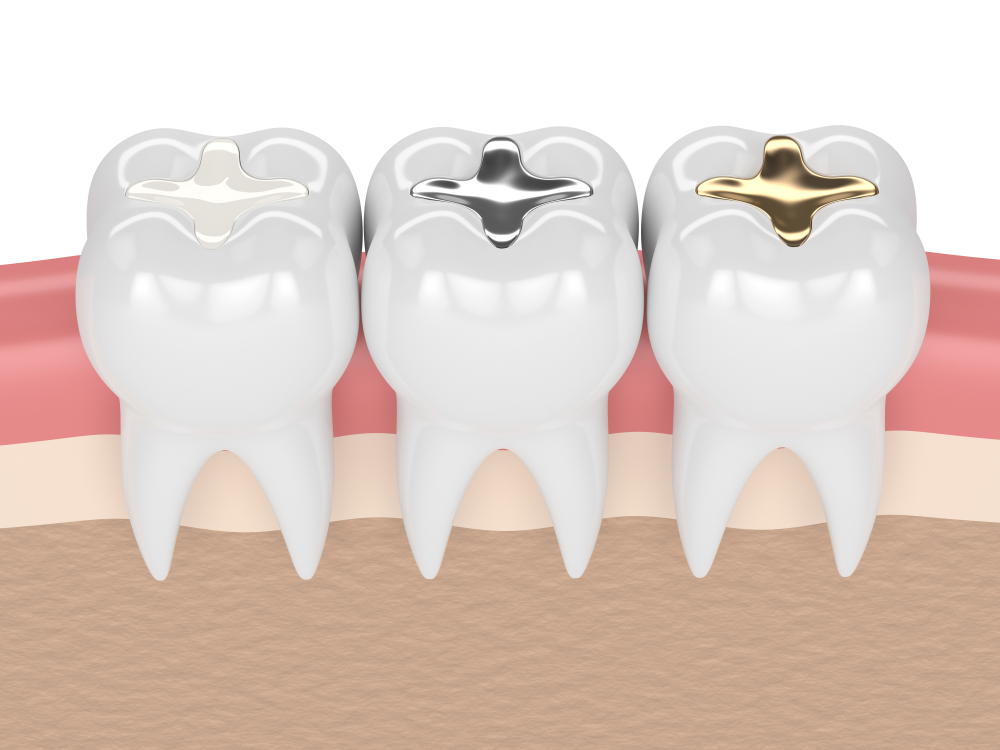What are dental fillings, and why are they necessary?
Dental fillings are materials used to restore the structure and function of a tooth damaged by decay or trauma. They are necessary to prevent further damage, restore the tooth’s strength and shape, and prevent bacteria from reentering.
Cavities are a common problem for people of all ages. If left untreated, cavities can lead to tooth decay and loss. Fortunately, dental fillings can help restore teeth damaged by decay. This blog post will provide an overview of dental fillings and their purpose. We’ll also discuss the different dental fillings available, including cast gold fillings, silver amalgams, and tooth-colored composites. You’ll learn about filling a tooth and maintaining teeth with fillings. Lastly, we’ll address the safety concerns surrounding amalgam-type fillings and why taking care of your oral health is essential to avoid cavities altogether.
Understanding the Purpose of Dental Fillings
Dental fillings treat cavities caused by tooth decay, restoring functionality and strength. They prevent the decay from spreading, protecting the tooth from further damage. Additionally, dental fillings improve the appearance of the tooth. By filling in the decayed area, they act as a protective barrier against future decay. Dental fillings play a crucial role in maintaining oral health and preventing complications. A dental filling is a common form of restorative dental treatment that helps repair minor fractures or decay in the teeth. It can even out the tooth’s surface and improve the jaw’s function for biting and chewing. Suppose the seal between the tooth enamel and the filling breaks down. In that case, food particles and decay-causing bacteria can work under the filling, increasing the risk of developing additional decay in that tooth. If left untreated, this decay can progress to infect the dental pulp and may cause an abscessed tooth. Saliva, along with fluoride from toothpaste or applied by a dentist or dental hygienist, helps repair the enamel by providing minerals and preventing further mineral loss.
Different Types of Dental Fillings
Cast gold fillings are known for their durability and long-lasting nature. On the other hand, tooth-colored composites offer a natural-looking appearance by being customized to match the surrounding teeth. Porcelain fillings, called inlays or onlays, are custom-made in a lab and bonded to your tooth. They’re matched to your tooth color and resist staining. A porcelain restoration generally covers most of the tooth. Their cost is similar to gold. Glass ionomer fillings, made from acrylic and a specific type of glass material, are primarily used for fillings below the gum line. They also release fluoride that can help protect from further tooth decay. The choice of dental filling material depends on factors like the tooth’s location and personal preference. It’s essential to consider these factors when opting for dental fillings, as they play a crucial role in maintaining the integrity and aesthetics of your smile. Inlays and onlays are types of indirect fillings, with inlays being similar to fillings, but the entire work lies within the cusps on the chewing surface of the tooth, while onlays are more extensive, covering one or more cusps. Onlays are sometimes called partial crowns. Another type of inlay and onlay, direct inlays and onlays, follow similar processes and procedures as the indirect, but the direct is made in the mouth and can be placed in one visit. The type of inlay or onlay used depends on how much sound tooth structure remains and consideration of any cosmetic concerns.
Cast Gold Fillings
Cast gold fillings, composed of gold, copper, and other metals, are renowned for their exceptional durability and strength. Resistant to wear, these fillings can last for many years, making them an ideal choice for more extensive restorations. However, it’s important to note the disadvantages of cast gold fillings. One major disadvantage is the expense. Gold cast fillings cost more than other materials, up to 10 times higher than silver amalgam fillings. Their superior longevity and reliability have made them a popular option in restorative dentistry.
Silver Fillings (Amalgams)
Silver fillings, also known as amalgams, are a popular choice for dental fillings. Made of a mixture of silver, tin, copper, and mercury, these fillings are durable and can withstand the forces of chewing. However, concerns have been raised about their safety due to mercury. Despite this, amalgam fillings are used because of their durability and cost-effectiveness. Discussing concerns or questions with your dentist is essential if you’re considering silver fillings.
Tooth-colored Composites
Tooth-colored composites, also known as composite fillings, are a blend of plastic and glass materials. They can be color-matched to the natural teeth, resulting in a more aesthetically pleasing outcome. Unlike other materials, composite fillings bond directly to the tooth, requiring minimal removal of the natural tooth structure. These fillings are ideal for small to medium-sized restorations when there is insufficient tooth structure to support a filling but the tooth is not so severely damaged that it needs a crown. If your dentist places a bonded filling (generally done with composite fillings), they will first etch the tooth with an acid gel. Etching makes tiny holes in the tooth’s enamel that the composite material fills as the dentist places the filling. It’s worth noting that composite fillings may be more susceptible to chipping or staining.
Conclusion
In summary, dental fillings are a common and effective solution for restoring teeth damaged by decay or trauma. Different types of dental fillings are available, including cast gold fillings, silver fillings (amalgams), and tooth-colored composites. Filling a tooth involves removing the decayed portion, cleaning the cavity, and filling it with the chosen material. While amalgam fillings have been questioned for their safety due to their mercury content, they are still widely used and considered safe by dental professionals. To maintain teeth with fillings, it is essential to practice good oral hygiene, avoid biting on complex objects, and visit your dentist regularly for check-ups. By following these guidelines, you can extend the life of your fillings and ensure the long-term health of your teeth.
Make an appointment by calling (937) 446-6781.

 Meet Dr. Botti
Meet Dr. Botti
 Meet Dr. Scranton
Meet Dr. Scranton
 Our Team
Our Team
 Patient Forms
Patient Forms Online Bill Pay
Online Bill Pay Benefit Program
Benefit Program Your First Visit
Your First Visit